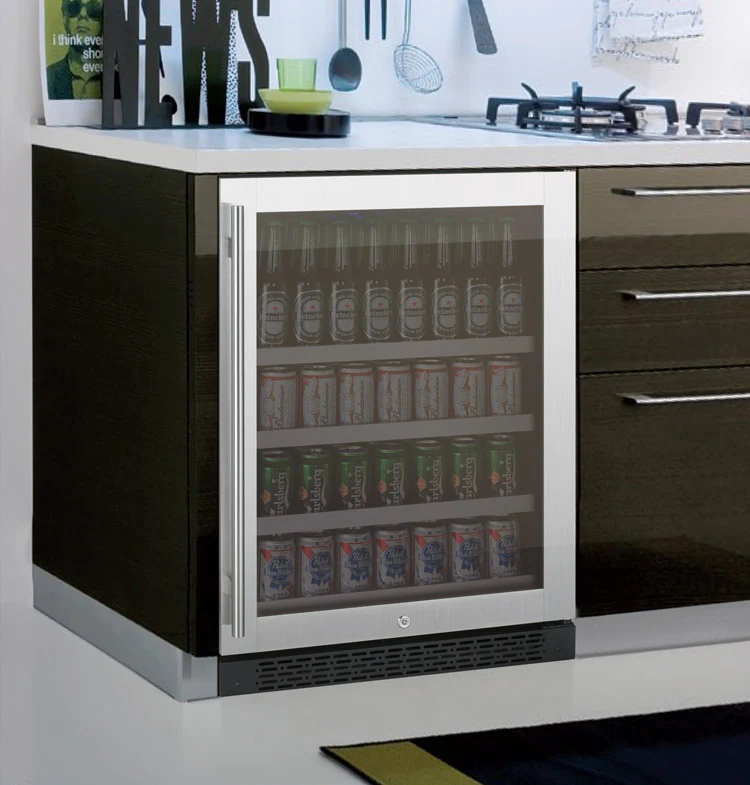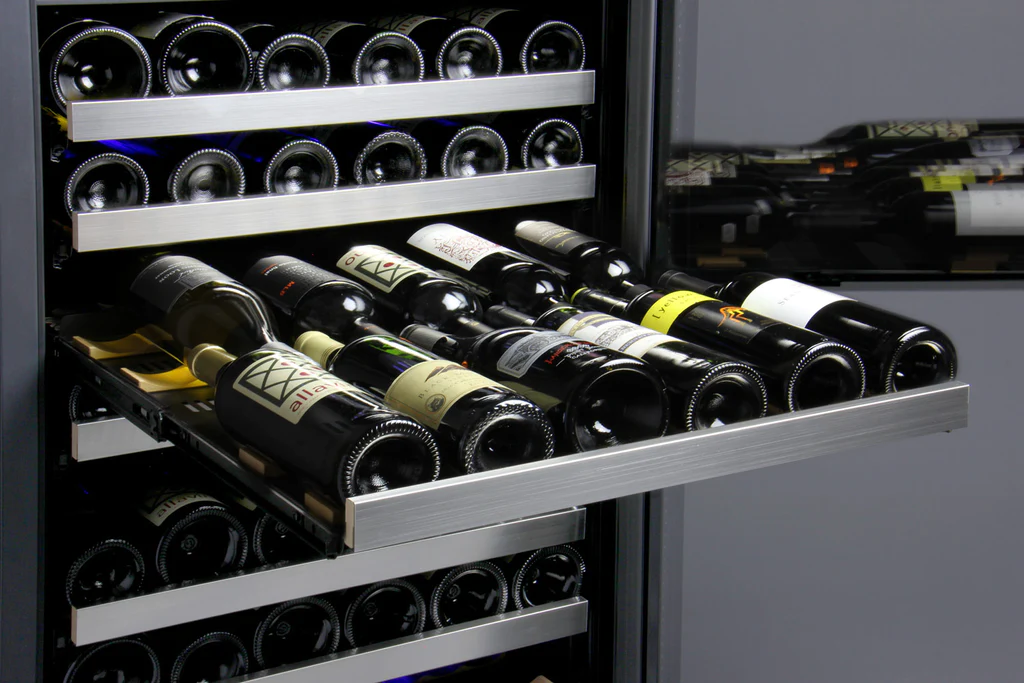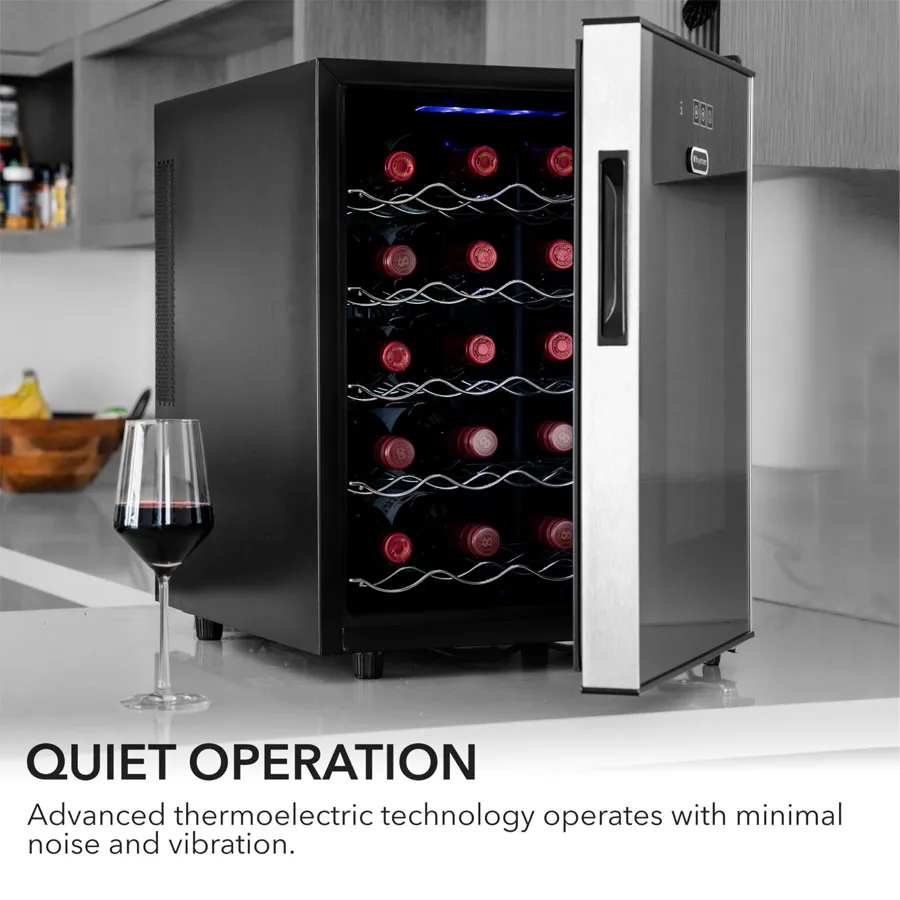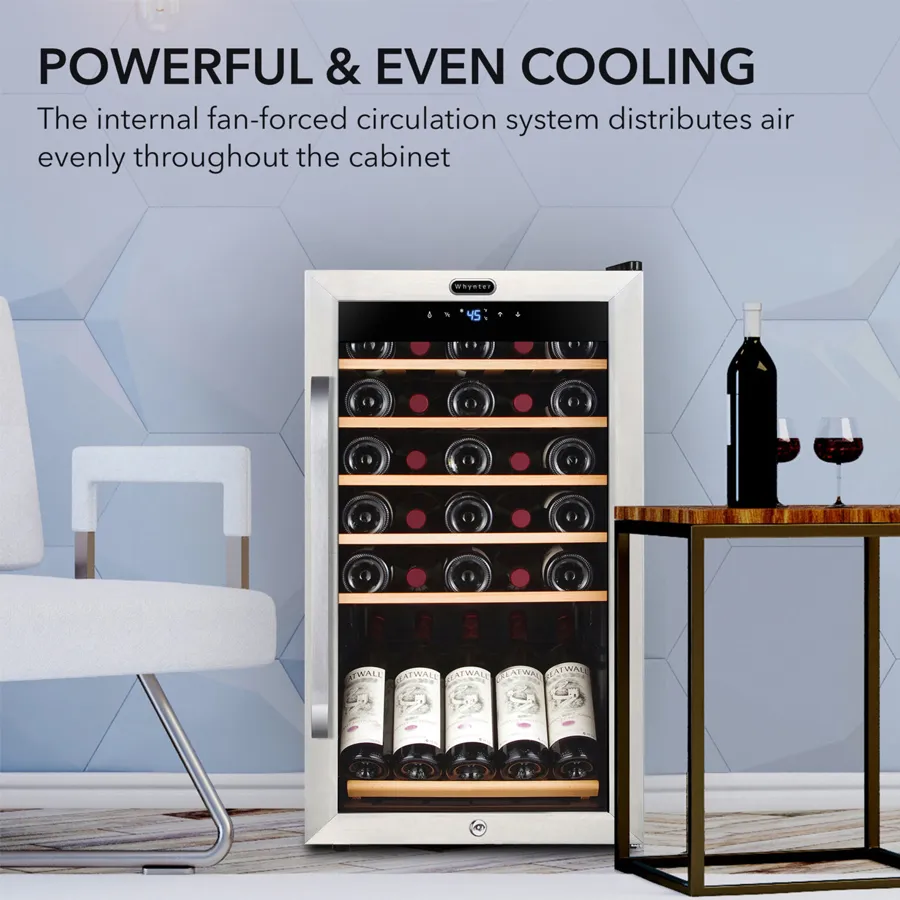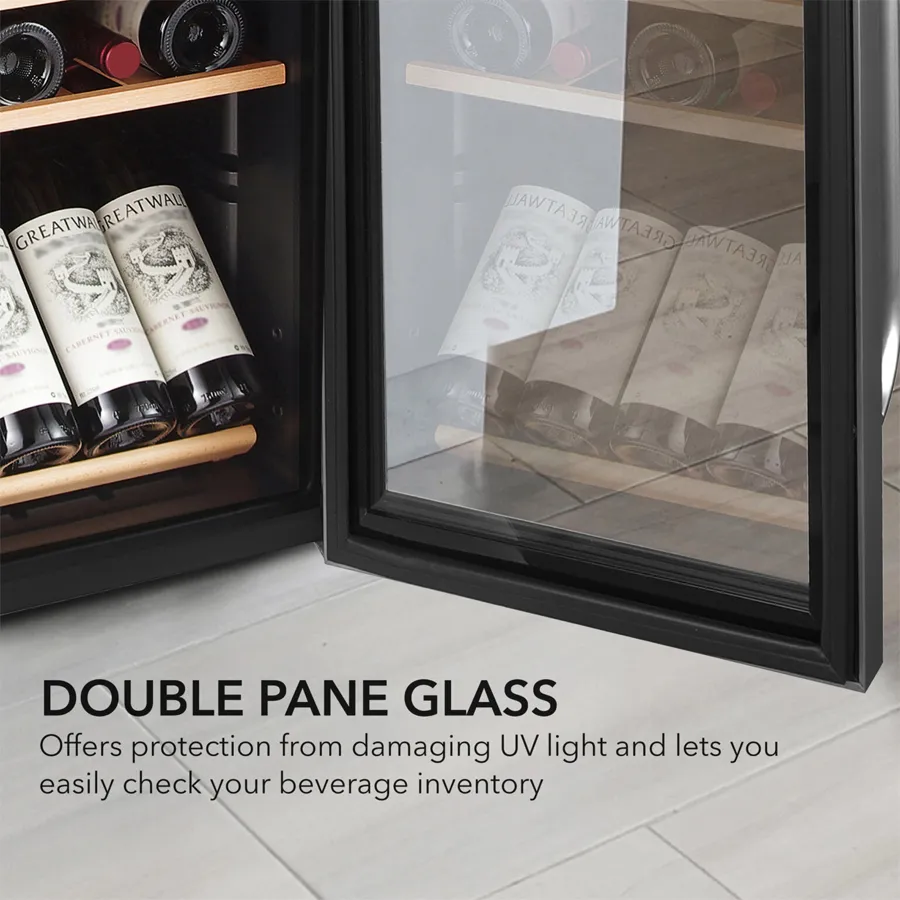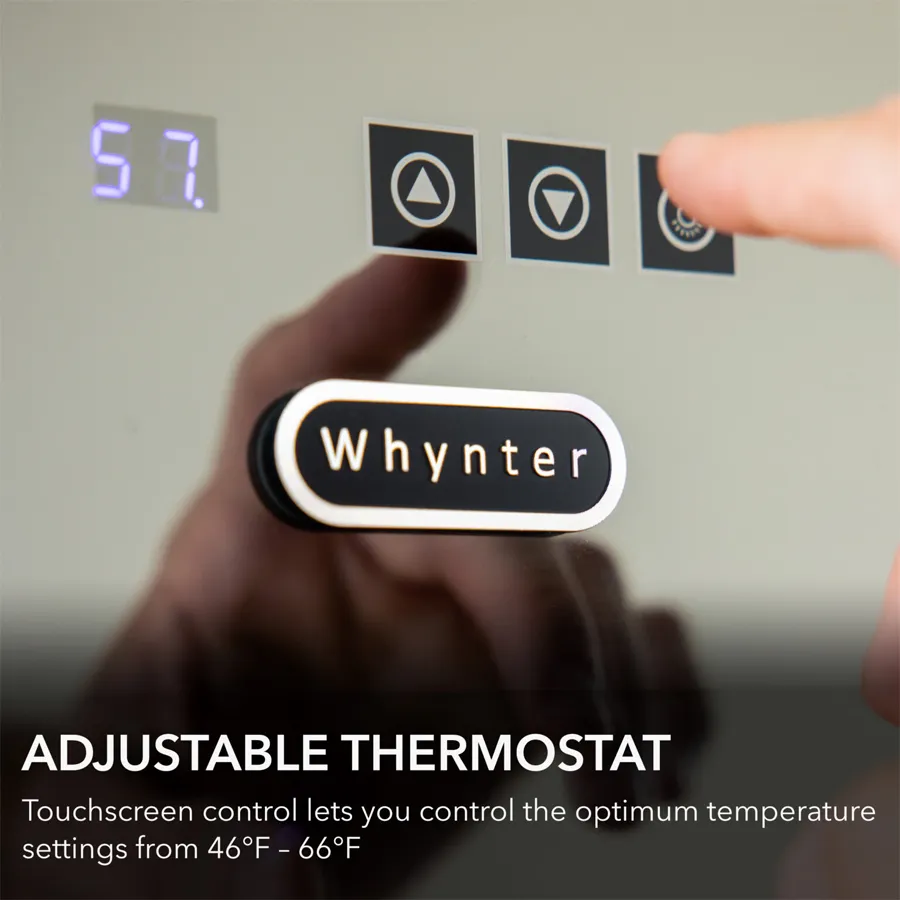Are you tired of your prized collection of wines being ruined by inconsistent temperatures? Say hello to a revolutionary solution that will give your wine collection the luxurious haven it deserves – the thermoelectric wine cooler refrigerator. In this blog post, we will unravel the fascinating workings of this game-changing appliance, ensuring your wines are preserved at the perfect temperature, and always ready to mesmerize your taste buds.
=> Read More: Compressor or Thermoelectric Winecooler: Which Is Better
What is a Thermoelectric Wine Cooler?
A thermoelectric wine cooler refrigerator uses special thermoelectric cooling technology to maintain the ideal temperature for storing your wine. The working principle of a thermoelectric wine cooler is based on the Peltier effect, which is a phenomenon discovered by a French physicist named Jean Charles Athanase Peltier. This effect occurs when an electric current flows through two types of semiconductors, creating a temperature difference between them.
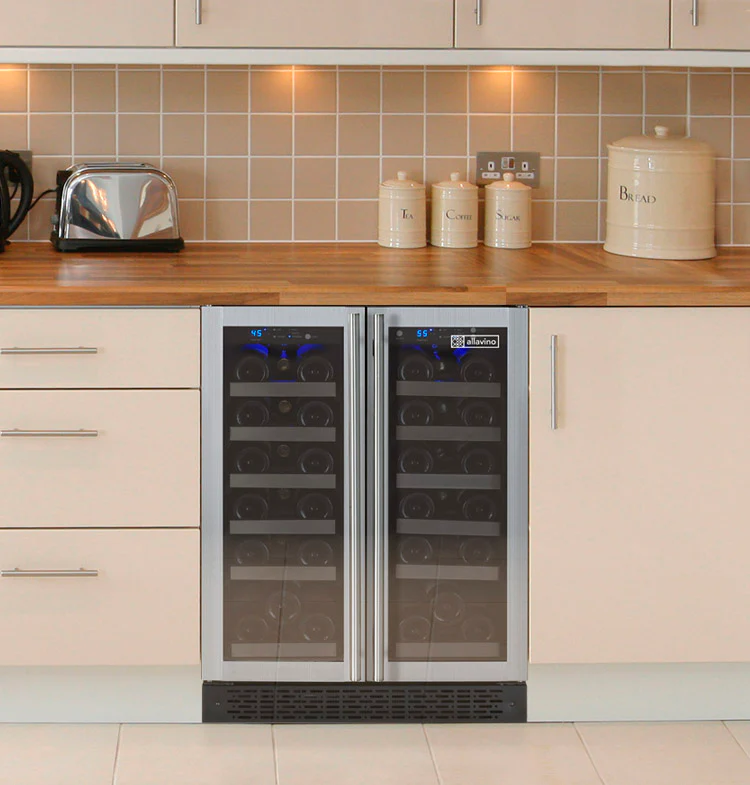
If you are particularly concerned about noise levels and energy efficiency, a thermoelectric wine cooler may be a better fit for you. Thermoelectric wine coolers use a different cooling method that is quieter and more energy-efficient, making it a great option for smaller spaces, such as apartments or condominiums. It’s also worth mentioning that thermoelectric wine coolers are vibration-free, which can be beneficial for preserving the sediments in your wine.
How a Thermoelectric Wine Cooler Refrigerator Work?
- Inside the wine cooler, there are two thin ceramic plates made of different semiconductor materials. One plate gets hot while the other gets cold. The hot plate is attached to a heat sink, which helps dissipate the heat generated, while the cold plate is in direct contact with the wine bottles.
- When you plug in the wine cooler and set the desired temperature, the electric current starts flowing through the semiconductors. As a result, one side of the plate absorbs heat from the inside of the cooler, causing that side to become cold. The absorbed heat is then transferred to the other side of the plate, which is connected to the heat sink and released into the surrounding environment.
- The cool side of the ceramic plate maintains a stable temperature, which is crucial for storing wine properly. It keeps the wine bottles at a consistent temperature, preventing temperature fluctuations that could harm the flavor and quality of your wine.
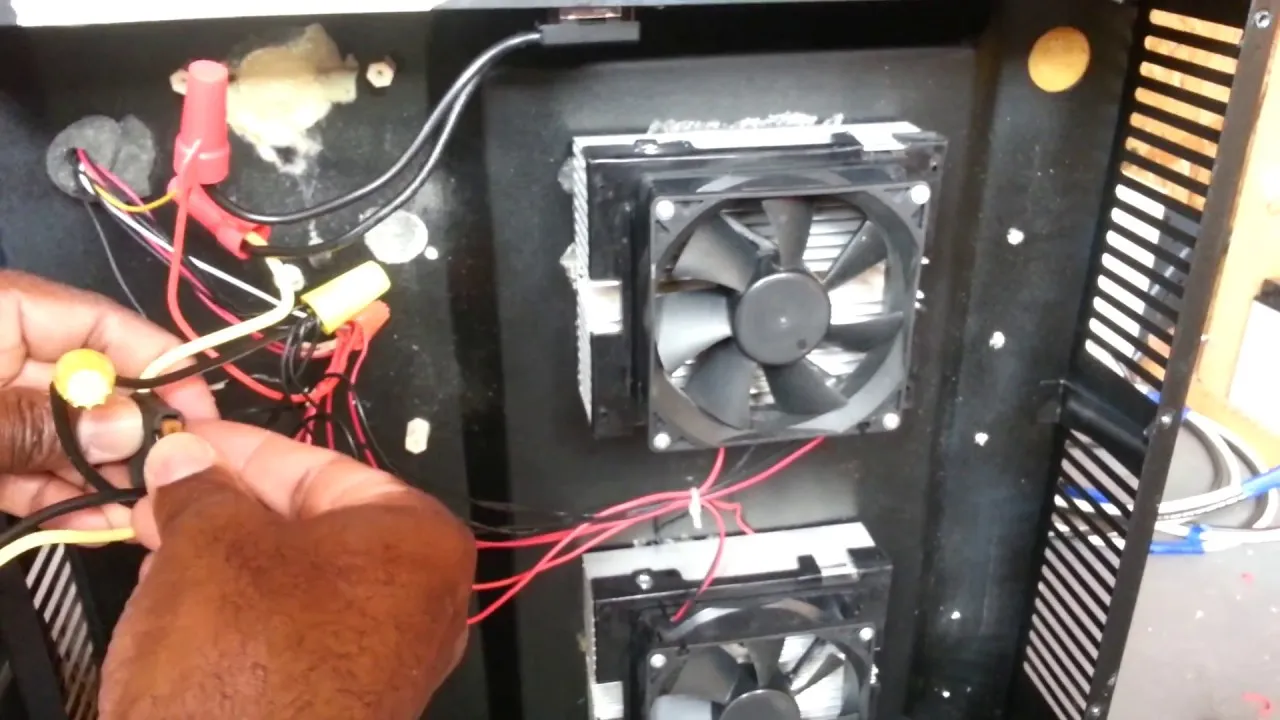
Pros of Thermoelectric Wine Cooler Refrigerator:
Silent Operation:
Unlike traditional compressor-based wine coolers, thermoelectric models operate without any noisy mechanical components. This ensures a whisper-quiet operation, allowing you to place the wine cooler in any desired location without causing any disturbances.
Energy Efficiency:
Thermoelectric wine coolers are known for their energy-efficient operation. They consume significantly less electricity compared to compressor models, making them more cost-effective in the long run. Additionally, this energy efficiency contributes to a reduced carbon footprint, making it an eco-friendly choice.
Vibration-Free Storage:
Compressor-based wine coolers generate vibrations during operation, which can disturb the sediment in the wine bottles and potentially impact the taste and quality of the wine. Thermoelectric wine coolers, on the other hand, do not have any moving parts, ensuring a vibration-free storage environment for your wines.
Temperature Stability:
Thermoelectric coolers offer excellent temperature stability, maintaining a consistent temperature throughout the cooler. This stable environment is vital for preserving the taste, aroma, and texture of the wines, allowing them to age gracefully over time.
Cons of Thermoelectric Wine Cooler Refrigerator:
Limited Cooling Capacity:
Thermoelectric wine coolers are more suitable for small to medium wine collections. They have lower cooling capacity compared to compressor models, which may limit their ability to store a large number of wine bottles or adequately cool in warmer climates. If you have a vast wine collection or live in a region with higher temperatures, a compressor wine cooler may be a better choice.
Temperature Limitations:
While thermoelectric wine coolers generally provide consistent cooling, they might struggle to achieve extremely low temperatures required for some sparkling wines or chilling beverages rapidly. If you frequently store these specific types of beverages, you may need to consider alternative or additional cooling options.
Ambient Temperature Sensitivity:
Thermoelectric wine coolers are more sensitive to ambient temperature compared to compressor models. They perform best in a climate-controlled environment with consistent room temperatures. Fluctuations in room temperature can potentially impact their cooling efficiency and ability to maintain the desired temperature inside the cooler.
Longer Cooling Time:
Thermoelectric coolers typically take longer to cool down compared to compressor models. While this may not be an issue for many wine enthusiasts, it’s worth noting that it can take some time for the cooler to reach the desired temperature after loading new bottles or in warmer conditions.

